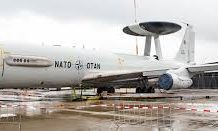
The Canadian government has unveiled a significant investment aimed at strengthening its national defense sector and reducing its dependence on U.S.-made military hardware by fostering new international partnerships.
On Monday, Prime Minister Mark Carney revealed a plan to allocate $6.6 billion (equivalent to 9 billion Canadian dollars) in additional funding to the Department of National Defence over the next ten months. This investment is designed to help Canada meet NATO’s target of spending 2% of its GDP on defense by April 2026.
By that time, Canada’s total defense and security expenditure is projected to reach $45.7 billion (CA $62.7 billion), encompassing both the Department of National Defence and other federal departments involved in defense-related activities.
A portion of the new funding—$3 billion (CA $4.1 billion)—will be directed toward boosting the domestic defense industry. This includes new initiatives and a strategic shift away from heavy reliance on U.S. military procurements. Carney emphasized this change in a national address, saying, “We should no longer send three-quarters of our defence capital spending to America.”
Some of the investment will likely support the Rearm Europe initiative, which Carney has indicated he is eager to join. He has also expressed a desire to build stronger ties with European nations, especially in light of economic threats and tariffs imposed by U.S. President Donald Trump, who once claimed Canada could avoid such measures only by becoming the 51st U.S. state—a proposal Carney has firmly rejected.
Canadian officials, speaking anonymously, stressed that while the U.S. remains a key partner, Canada will prioritize strategic cooperation based on its national interests. Carney cautioned that the dynamic with the U.S. has shifted, and Canada must become more autonomous in matters of defense.
“The United States is beginning to monetize its dominance—charging for market access and scaling back its contributions to our collective defense,” Carney said during his televised speech.
Further announcements on domestic defense industry initiatives are expected in the coming months. In an interview with the Canadian Broadcasting Corporation on May 27, Carney expressed hope that Canada could formally join the Rearm Europe initiative by July 1.
In a separate media briefing, defense officials outlined how this additional funding will pave the way for upcoming military acquisitions. Carney has pledged to procure self-propelled howitzers, conventionally-powered submarines, and Canadian-made early warning and control aircraft. Plans also include a new ground-based air defense system for the Canadian Army and additional heavy icebreakers, though specific quantities remain undisclosed.
The announced budget will also support salary increases for Canadian Forces personnel, bolster cyber defense capabilities, and enhance both existing and emerging military functions. According to government sources, these efforts are part of a broader push to improve Canada’s self-reliance in national defense, especially in the Arctic. This push includes a commitment to prioritizing Canadian suppliers.
Additionally, Carney has initiated a review of Canada’s procurement of Lockheed Martin’s F-35 fighter jets. Canada initially committed CA $19 billion ($13.2 billion) in January 2023 for the acquisition of 88 F-35s from the U.S. At present, only the first 16 jets have been formally ordered. Carney, linking the review to Trump’s ongoing trade disputes with Canada, has explored potential alternatives with French and British leaders, including the possibility of manufacturing a different fighter model domestically.
Defense Department spokesperson Andrée-Anne Poulin confirmed via email on June 2 that the F-35 review remains in progress and is expected to conclude by summer 2025, though no precise timeline has been provided.




